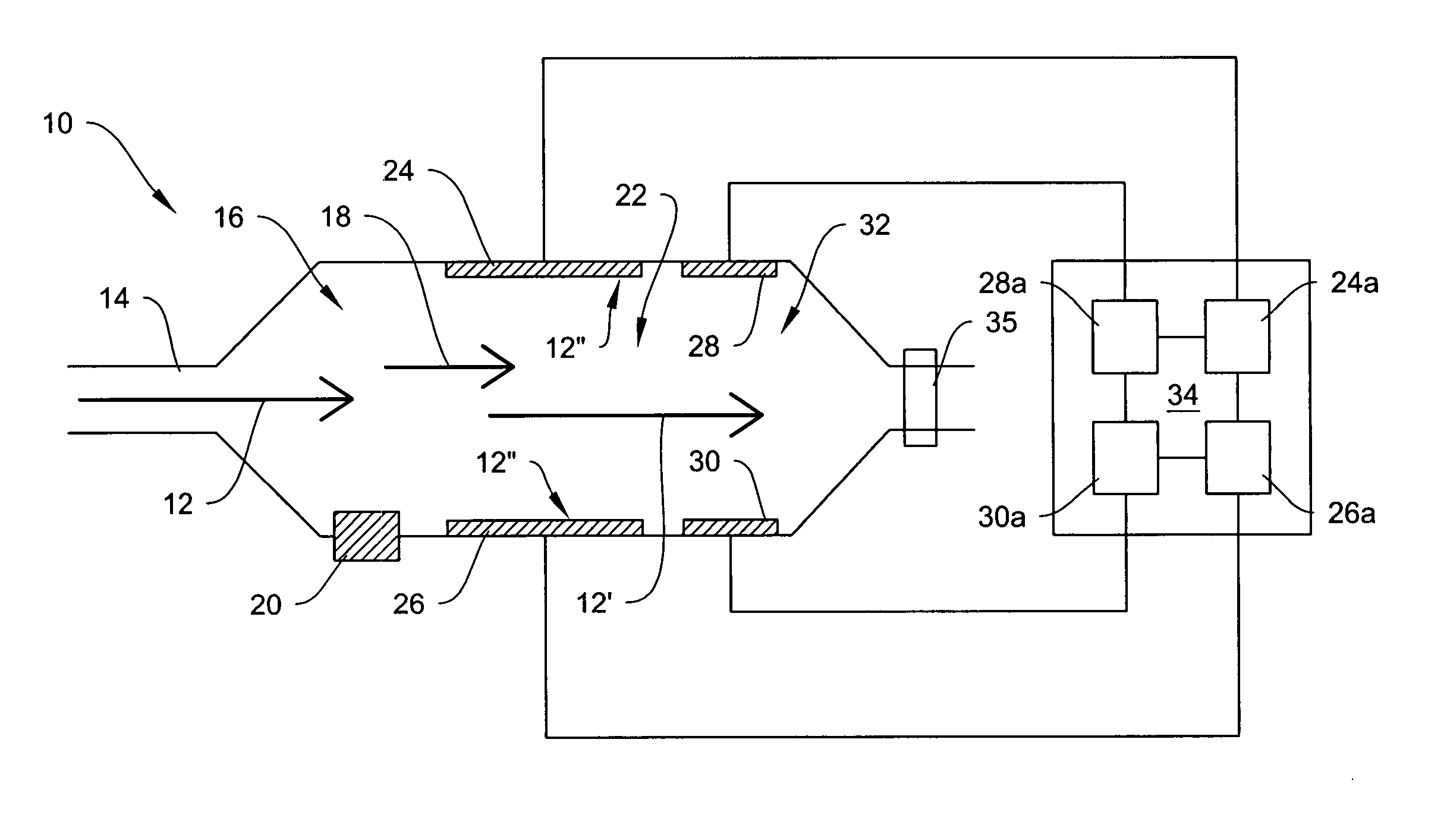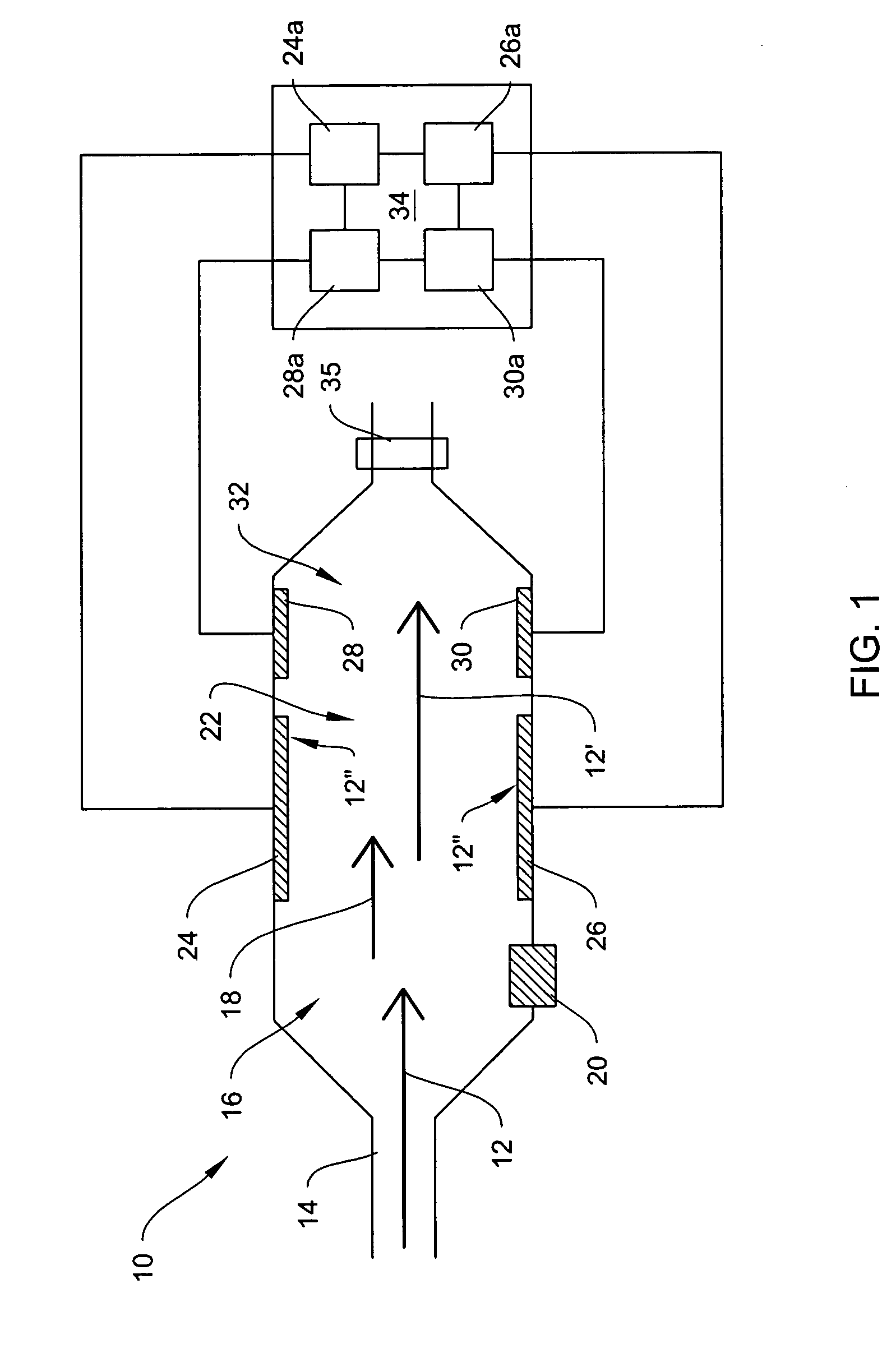System for trajectory-based ion species identification
- Summary
- Abstract
- Description
- Claims
- Application Information
AI Technical Summary
Benefits of technology
Problems solved by technology
Method used
Image
Examples
Embodiment Construction
[0051] A FAIMS spectrometer 10, shown in FIG. 1, receives a chemical sample 12 at inlet 14. The sample flows into ionization region 16 in flow path 18, where it is ionized by ionization source 20. Ionization of the compounds in the sample creates ionized molecules (“ions”) that are carried by a transport or carrier medium into the ion filter 22 in flow path 18 between filter electrodes 24, 26. Embodiments of a compact and efficient high field asymmetric ion mobility spectrometer are disclosed in U.S. Pat. No. 6,495,823 (ion transport by carrier gas) and in U.S. Pat. No. 6,512,224 (electric field ion transport), incorporated herein by reference. Systems of the invention may include plate type or cylindrical type electrodes and the like.
[0052] A compensated, asymmetric high electric field is generated between the filter electrodes that has differential impact upon mobility of the ions according to their size, charge and cross-section, and mass. This mobility difference produces a cha...
PUM
 Login to View More
Login to View More Abstract
Description
Claims
Application Information
 Login to View More
Login to View More - R&D
- Intellectual Property
- Life Sciences
- Materials
- Tech Scout
- Unparalleled Data Quality
- Higher Quality Content
- 60% Fewer Hallucinations
Browse by: Latest US Patents, China's latest patents, Technical Efficacy Thesaurus, Application Domain, Technology Topic, Popular Technical Reports.
© 2025 PatSnap. All rights reserved.Legal|Privacy policy|Modern Slavery Act Transparency Statement|Sitemap|About US| Contact US: help@patsnap.com



